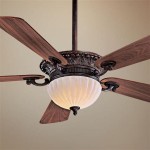Can I Paint My Walls, Ceiling, and Trim the Same Color?
The decision to paint walls, ceilings, and trim the same color is a matter of personal preference and design aesthetic. While some may consider it a daring choice, others find it a sophisticated and cohesive approach to interior design. This article will explore the pros and cons of painting all three elements in a single hue, providing insights into its impact on space, light, and overall design.
Visual Cohesion and Spaciousness
Painting walls, ceilings, and trim the same color can create a sense of visual unity and spaciousness. By eliminating distinct color breaks, the eye is drawn across the room without interruption, making the space appear larger and more cohesive. This technique is particularly effective in small rooms, where minimizing visual distractions can enhance the perception of space. The absence of contrasting colors can also create a sense of calm and tranquility, making the room feel more relaxing and inviting.
However, using a single color throughout can also make a room feel monotonous. When considering this approach, it is crucial to choose a color that is both versatile and visually appealing. If the color is too dark or overly saturated, the room could feel oppressive and cramped. Lighter, neutral tones, such as soft whites, greys, or beiges, are generally more suitable for this approach, as they maintain a sense of openness and brightness while providing a cohesive backdrop for furniture and décor.
Impact on Light and Space
The choice of color can significantly impact the perception of light and space within a room. Darker colors tend to absorb light, making a room feel smaller and more intimate. Conversely, lighter colors reflect light, making a room feel brighter and more spacious. When painting all three surfaces the same color, it is essential to consider the impact of the chosen hue on natural light and the overall ambiance of the room.
For example, a light grey or white can make a small room feel larger and brighter, while a deep navy blue can create a cozy and intimate atmosphere in a larger space. It is also important to consider the direction of natural light. Rooms with limited natural light might benefit from lighter colors to maximize the reflection of existing light, while rooms with abundant natural light can accommodate darker tones without feeling too oppressive.
Adding Visual Interest and Texture
While painting all three surfaces the same color can create a sense of unity, it is important to introduce other elements to add visual interest and prevent the room from seeming overly bland. This can be achieved through various means, such as:
- Varying Textures: Using textured paint on the walls or ceiling can add depth and visual interest.
- Patterned Wallpaper: Incorporating wallpaper on a single wall or a section of the ceiling can introduce a bold and dynamic element without disrupting the overall color scheme.
- Furniture and Accessories: Choosing furniture and décor in contrasting colors or patterns can add visual interest and break up the monotony of a single color scheme.
- Lighting: Strategic lighting can highlight specific features and create visual interest, adding depth and dimension to the space.
By incorporating these elements, you can create a cohesive and visually appealing space without sacrificing visual interest. The key is to balance the unifying effect of a single color with strategic elements that provide visual complexity and depth.
Key Considerations
Here are some considerations to keep in mind when deciding whether to paint your walls, ceiling, and trim the same color:
- Room Size: Smaller rooms might benefit from a single color scheme to create a sense of spaciousness, while larger rooms can accommodate a greater variety of colors and textures.
- Natural Light: Consider the impact of natural light on the chosen color. Lighter colors reflect more light, making a room feel brighter and more spacious, while darker colors absorb light, creating a more intimate atmosphere.
- Personal Style: Ultimately, the decision to paint all three surfaces the same color comes down to personal preference and the desired aesthetic. Consider your overall design vision and choose a color that complements your style and creates the desired ambiance.

Look I M Loving Painting Walls And Trim The Same Color

10 Great Reasons Why You Should Paint Your Wall Trim The Same Color As Walls Zhush

8 Reasons To Paint Your Wall And Trim The Same Color Hadley Court Interior Design Blog

Look I M Loving Painting Walls And Trim The Same Color

Painting Ceiling And Walls The Same Color A Do Kaitlin Madden

Look I M Loving Painting Walls And Trim The Same Color

8 Reasons To Paint Your Wall And Trim The Same Color Hadley Court Interior Design Blog

Look I M Loving Painting Walls And Trim The Same Color

A Single Hue Haven Painting Walls Doors Trim The Same Color Tinted

10 Great Reasons Why You Should Paint Your Wall Trim The Same Color As Walls Zhush
Related Posts








